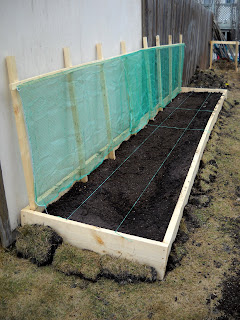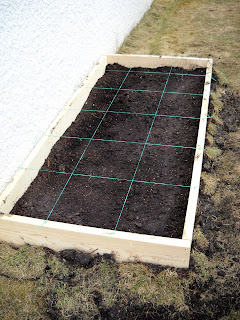I haven't read it in detail (I read the first 50% pretty quickly and glossed over the rest), and I haven't read the original Square Foot Gardening: A New Way to Garden in Less Space with Less Work; so I don't have much context... But... A few observations upon reading:
- This guy is very, very, very proud of 'his' square foot garden (then again, if I were to write a book about an idea I felt strongly enough to write a book about, I would probably voice that opinion strongly, perhaps stronger than I actually believe, in order to sell my book and my idea);
- (similar to first point) this book is highly...."branded". Mel suggests a growing mix that is equal parts peat moss, coarse vermiculite and compost from a variety of sources; and calls it "Mel's Mix". Not even "Mel's Favourite Mix", or "Mel's Preferred Mix" (though I guess those are wordier?).
- the book is highly opinionated with less fact and data than discourse. That's not a bad thing to market, but it makes me wonder where ALL THIS RESEARCH HE DID actually happened. Again, this may have appeared in the first book, and I would have no idea.
Some ideas I chose to apply to my garden:

Spacing
As above, I like the idea of spacing closely.
Raised Bed
Manitoba Gumbo sucks (literally, when wet, it will suck your boots off).
Note: I don't know if I agree with the guy who said it's great for your plants. If you have a layer of clay, and pour water on it, the water will sit on top for a long time, before slowly working its way down. In the summer heat, it is more likely to evaporate. And when dry, it cakes and cracks and is hard to rehydrate for the aforementioned reason.
I planned to avoid dealing with Manitoba gumbo by using commercially produced soil. However, these beds are open-bottomed; so over time, there will be mingling of my soil with the natural soil.
 Visible Grid
Visible GridI like the idea of a visible grid to keep things tidy. It's hard to visualise exactly what ought to go where near the middle of the bed.
However, in my 3x16 bed, it's just not a good idea to grid by square foot. I wouldn't want to use up my nails and twine; and some of my plants don't fit into perfect square feet (the way I have them planned). Maybe next year, though. Who knows!
Left: I have divided the bed into three parts. From nearest to farthest: Squashes, Cherry Tomatoes, Tomatoes. Refer to this post for diagrams.
In my 3x6 bed, it is manageable to grid out square feet, so I did.
 Right: heap of sod from old garden bed.
Right: heap of sod from old garden bed.Work done today:
- piled up sod around holes under beds
- piled up sod around raised beds for more warmth and water-retention
- put sod into depression near apple tree (not sure if it'll help; but I can fill with leftover topsoil later)
- watered beds
- pulled sod apart for laying against beds, and for earthworms
- distributed some earthworms in beds and compost heap
- laid grid on both beds
- turned compost heap
- added new compostables
- mixed coir
- added coir to compost heap
 Left: compost bin with added materials. The bright brown stuff is coir.
Left: compost bin with added materials. The bright brown stuff is coir. What's in my Composter
- last year's lawn scraps (mostly: leaves, grass, pinecones)
- dried grass from this year
- pieces of sod (for soil microbes and insects; as well as grass and soil)
- pine tree scraps (there's like half a bough in there)
Work to be done tomorrow:
- snip pine bough into smaller pieces
- snip apple tree prunings into smaller pieces
- turn compost
- rake lawn
- add materials to compost bin (yard scraps, kitchen scraps)
- buy more coir
- mix coir
- If no more pumpkin and zucchini growth, then start new pumpkin and zucchini seeds (tomorrow is 4w until transplanting date).
No comments:
Post a Comment